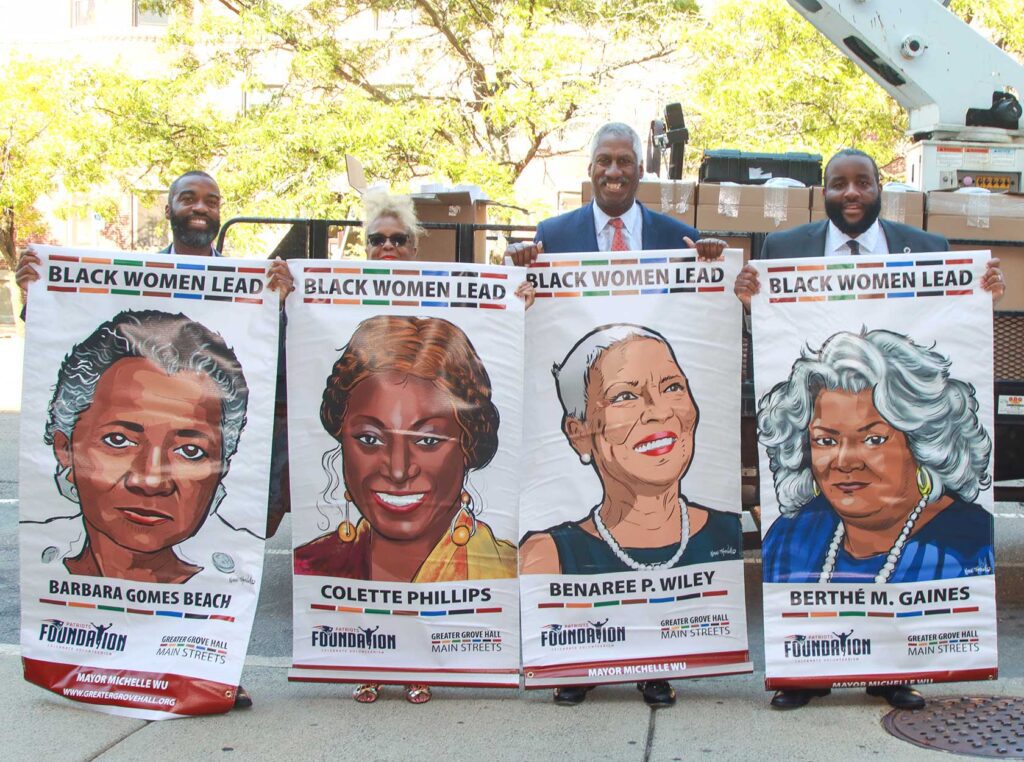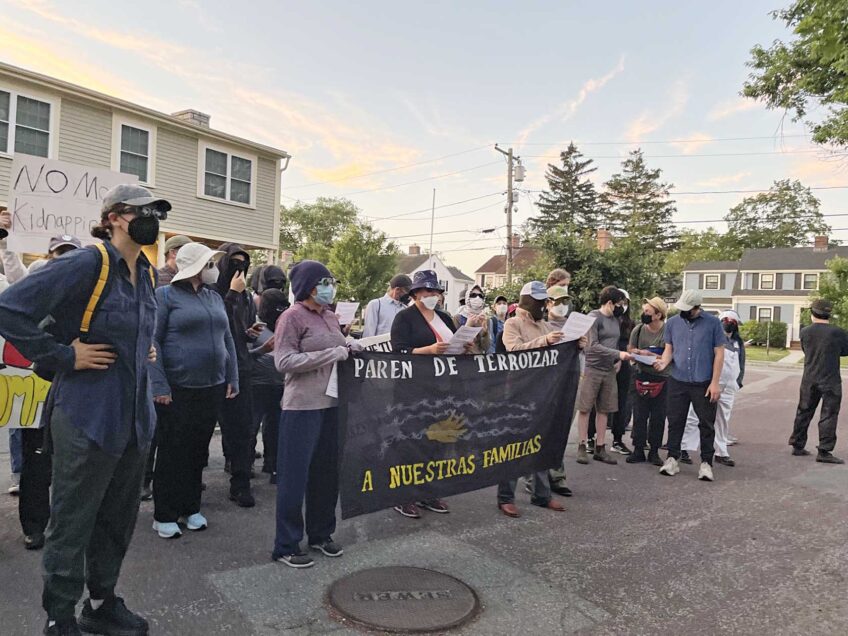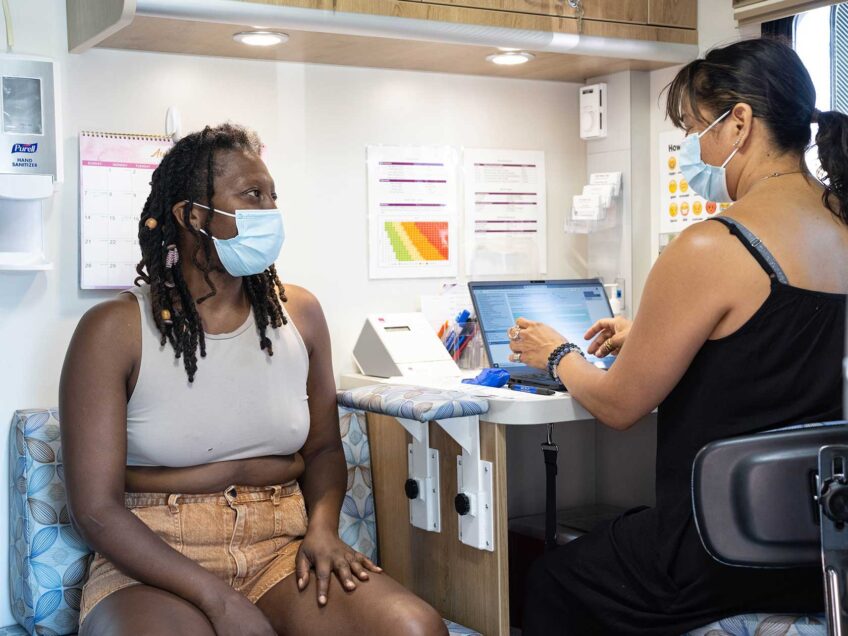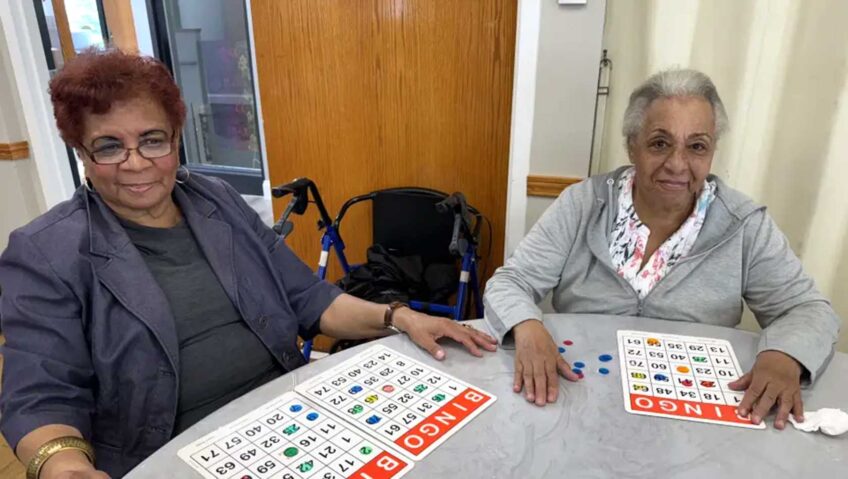
The “Black Women Lead” public art project adorns Blue Hill Avenue in Dorchester and Roxbury with 212 banners spotlighting iconic Black women — in almost every field of work — who’ve shattered glass ceilings by being the first Black woman to do something, inspiring many and making a difference in our communities.
From the literary trailblazer Phillis Wheatley to contemporary leaders like U.S. Rep. Ayanna Pressley and Karen Miller, who in 1985 became Boston’s first Black woman firefighter, these banners not only decorate the urban landscape but also illuminate their often overlooked contributions in Boston throughout history. Beyond the colorful display, they are soaring symbols of boundless innovation and uncharted leadership beginning as early as the 1700s.
Ed Gaskin, organizer of “Black Women Lead” and executive director of Greater Grove Hall Main Streets, said he was inspired to take on the project after attending an event at the Boston Society of Architects a few years ago. Discussion there about the link between public art and economic development set him off to see where public art exists in Boston.
Gaskin noticed a stark disparity in public art distribution, with a high concentration in downtown Boston and near museums. At the time, Grove Hall’s only public art installation at the time was a painted utility box. He has sought to challenge the imbalance by showcasing art in nontraditional ways and in public spaces.

(From left) Ed Gaskin, Hulda Suazo, Beulah Providence and Emonie Blair pose with Beulah’s Black Women Lead banner. COURTESY PHOTO
“I was trying to find ways that I could basically pick up on the hip-hop tradition of street art, graffiti, art tagging and things like that, where you’re using nontraditional space to promote Black art or artists,” he said.
That became the catalyst for the banner installations hanging on free spaces like streetlight poles, a project started in 2019 and completed in early October.
Gaskin has a personal connection to the project. Reflecting on his own family history, he highlights the achievements of his grandmother and a great-aunt, who defied the societal norms of their time by graduating from college in 1929 and 1933, an uncommon feat in Black families during that era.
Inspired by their accomplishments, Gaskin envisioned the banners featuring women of similar resilience and success, paying homage to his own family’s legacy and recognizing the untold stories of Black women leaders in Boston.
Today, a vibrant display of 212 banners graces the avenue, bearing the stories of impactful Black women leaders.
Nora Baston, deputy superintendent of the Boston Police Department, is among the constellation of leaders featured in the public art project. In a recent interview, Baston said the banners could expand the community’s perception of leadership.
“It means a lot to have women displayed all across Blue Hill Avenue — both young and old, passed away and still climbing,” she said. “It’s not about the power of your position, but the power of what you represent in your community.”
As the current chief of the police department’s professional development, Baston’s vision goes beyond training — she’s shaping the next generation of officers to champion socially just policing through empathy and empowerment with projects like the Safe Street Teams Initiative and others.
“To have a police officer even be acknowledged in the mix of many professions and show that we still count and that we care, I think was a huge statement,” she said. “It doesn’t matter what your occupation is — doctors, lawyers, schoolteachers, moms, civil rights leaders — anything. It was across the board to show that your voice counts, and you’re valued, and to show the impact that you have made in so many ways.”
Notably, the selection process for the women featured on the banners involved collaboration with a group of experts in an array of fields as well as students from Mother Caroline Academy & Education Center in Dorchester. Gaskin also collaborated with Northeastern University and the Boston Public Library to create online biographies for the featured women.
“Leadership is not easy. But one thing that we all have in common is that we didn’t give up on whatever we believed in,” Baston added. “It feels incredible to be recognized with these women. So many of them are people I look up to, people I wrote my reports on when I was in high school. It just meant a lot to be included on the same platform as them.”
Gaskin said, “One thing that was very important was the role that the Patriots Foundation played,” referring to the charitable arm of the professional football team. “The project would not have been possible without their support.”
Josh Kraft, president of the New England Patriots Foundation, said funding the project was a no-brainer.
“Usually we take a little bit of time to make decisions. This we decided within 10 seconds, because celebrating these underrepresented women leaders of color is actually essential,” Kraft said.
“These leaders should get the attention and the accolades they so richly deserved. And we figured this was a great way to do it,” he added. “So it’s very important to us, and I think the impact is that these are leaders that can’t be overlooked or forgotten about because they’ve made such a difference not just in their neighborhoods, but also in the city of Boston and the state of Massachusetts.”
Gaskin said he hopes the banners contribute to the cultural enrichment and also to economic development in Grove Hall by attracting tourism and foot traffic to local businesses.
His vision extends beyond the current display, with plans to secure additional funding and expand the initiative by adding more banners, accepting nominations on whom to present.






